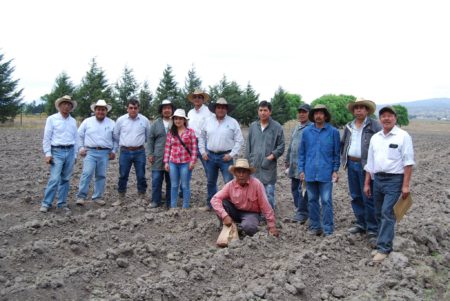Today provides a great opportunity to show the great range of activities that the international genebanks of the CGIAR centres are engaged in.
First, look at IRRI. Their new Genetic Resources Seed Processing Laboratory (GRSPL) was just opened by the German Ambassador to the Philippines.
https://twitter.com/RiceResearch/status/720193902225920001
The $2-million facility was funded by Germany’s Federal Ministry for Economic Cooperation and Development (BMZ). Since 1974, Germany’s support to research and development at IRRI stands at $62 million, most of that coming from the BMZ.
The new facility will increase the processing and storage capacity of the International Rice Genebank by 40 percent.
With German support, IRRI has also improved the conservation of rice genetic resources through new accessions as well as research to improve seed longevity in storage, streamline the seed management process and enhance data management.
The GRSPL now upgrades the seed processing function of IRRI’s T.T. Chang Genetic Resources Center which handles the conservation of global rice diversity through the International Rice Genebank and provides germplasm for rice research and breeding programs at IRRI and rice research institutes worldwide.
The genebank is nearing its maximum capacity, said Ruaraidh Sackville Hamilton, Head of the International Rice Genebank. “Our next step is to try to increase capacity.”
And at the other end of the pipeline, have a look at what Ruaraidh’s colleague at CIMMYT, Denise Costich, has just posted on Facebook.
How a video leads to a collaboration… Some of you might remember that I posted a video earlier this year that was made for the Global Crop Diversity Trust “Crops In Color” campaign. I was interviewed, as was a gentleman named Misael Gonzalez Avila, who is the leader of a farmers’ group in the town of Temoaya, not far from Toluca, where we have been regenerating our highland maize collection for the past two years. I had never seen him before I watched the video for the first time. His group works with another project at CIMMYT, called “MasAgro,” and when the photographer was visiting, he was taken out to photograph the group by one of the assistants of that project, who I also did not know. Once I saw Misael and heard him speak, I commented to one of my assistants: “You know, we really should work with this guy…” Well, long story short, now we are! Today we planted a trial with Misael, and his group, including the 12 most popular materials that were selected by the farmers who attended our field day in 2014, which we incremented in 2015. They looked great in the station, so now we need to see how they behave in farmers’ fields… Keep you posted on that later this year… A few pictures of our day in Temoaya…

And of course, there’s everything in between too.